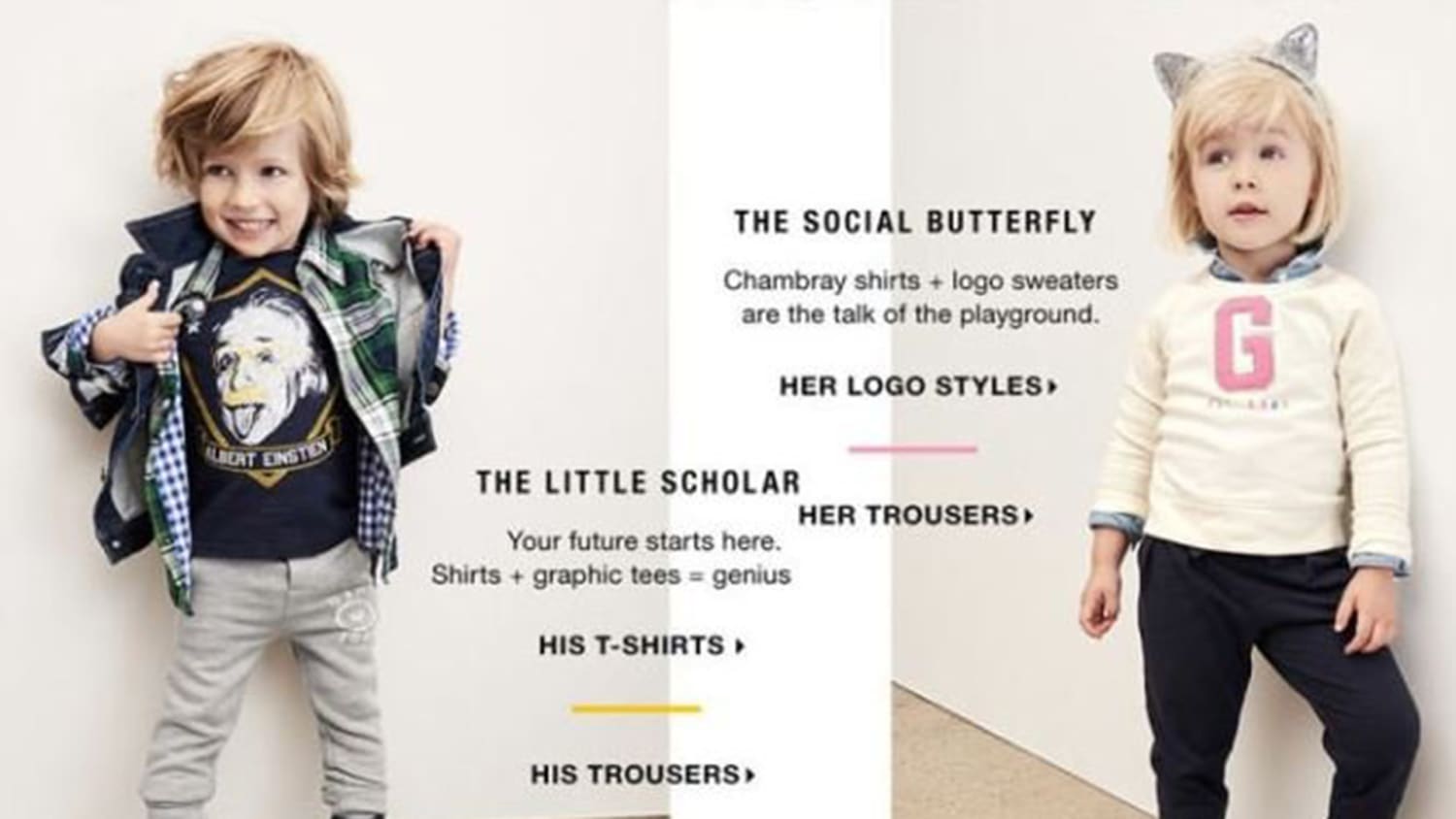Women's Rights & Issues
Related: About this forumHow a sexist T-shirt harms us all
How a sexist T-shirt harms us all
Chitra Ramaswamy
A Gap advert that pictures boys as brainy and girls as sociable reflects the distorted reality we live in
Gap store in San Francisco

‘Like advertising, and Gap, everyday sexism in children’s advertising is everywhere.’ Photograph: David Paul Morris/Bloomberg via Getty Images
The little girl looks winsomely into the middle distance, passive and unsmiling, presumably waiting for the next titbit of gossip to descend upon her kitten ears. The little boy grins and proudly shows off the image of Albert Einstein on his chest. “Your future starts here,” a new Gap advert tells him, which unfortunately is true. He is destined to be a “little scholar”. And the girl? A “social butterfly”, which isn’t even a job. Oh well, her chambray shirt (with pink logo, obviously) may not fast-track her into a science, technology, engineering and maths (Stem) subject but it will be “the talk of the playground”. And what more could a girl want?
Welcome to the world of everyday sexism in children’s advertising. Like advertising, and Gap, it is everywhere. Watch any TV advert aimed at children and you will see girls in shiny princess outfits emoting into microphones and boys dutifully pushing fire engines. Go to the children’s section of any clothes shop and you will encounter primary-coloured stripes for boys and pastel polka dots for girls. We are living in an age when even shapes are gendered. It is that ludicrous. The Gap ad designates boys as brainy and girls as sociable – gender stereotypes that have been around much longer than pink Lego. But people are fed up with it.
Last year a similar row arose when Marks & Spencer brought out a dinosaur-laden Natural History Museum clothing range for boys only, leading to the Labour MP Chi Onwurah to accuse the retailer of “gender specific marketing” and the launch of a #dinosaursforall campaign by Let Clothes Be Clothes. Unisex clothing is becoming more prevalent in adult ranges, with the high street retailer Zara launching its Ungendered line earlier this year. And small changes are happening in the grimly gendered world of toys, with Hamleys abandoning its pink and blue signs for girls and boys, and Sainsbury’s no longer labelling its doctor costumes for boys and nurse outfits for girls.
. . . . .
The point is that all of it matters, and all of it is connected. Whether gender stereotyping takes place in an email, on a T-shirt, in a toy shop or at a school, the effects are serious for all of us. And they are far-reaching, with an impact on everything from the gender pay gap and women being under-represented in Stem sectors to widespread sexual bullying in schools. The Gap ad is not an anomaly: it is the product of the deeply gendered world in which we all live, work and are grossly misrepresented. This kind of gender stereotyping is harmful not only to girls and boys but to women, men and every gender in between. After all, each of us should grow with the possibility of becoming a scientist, a social butterfly, neither or both.
https://www.theguardian.com/commentisfree/2016/aug/02/gap-advert-sexist-t-shirt-harms-us-all-boys-girls-distorted-reality